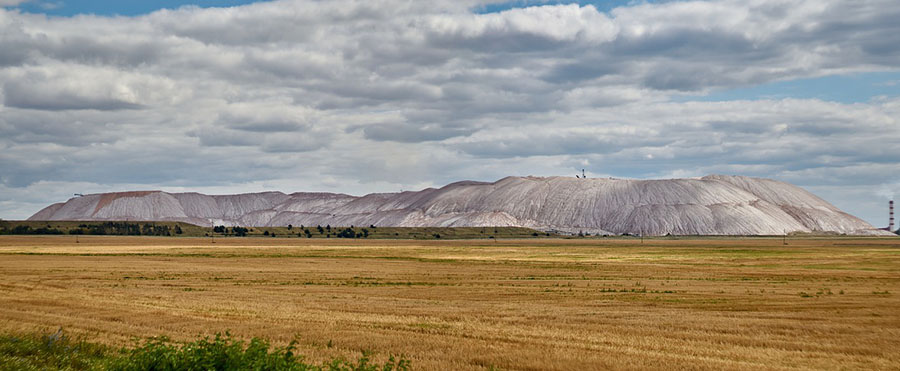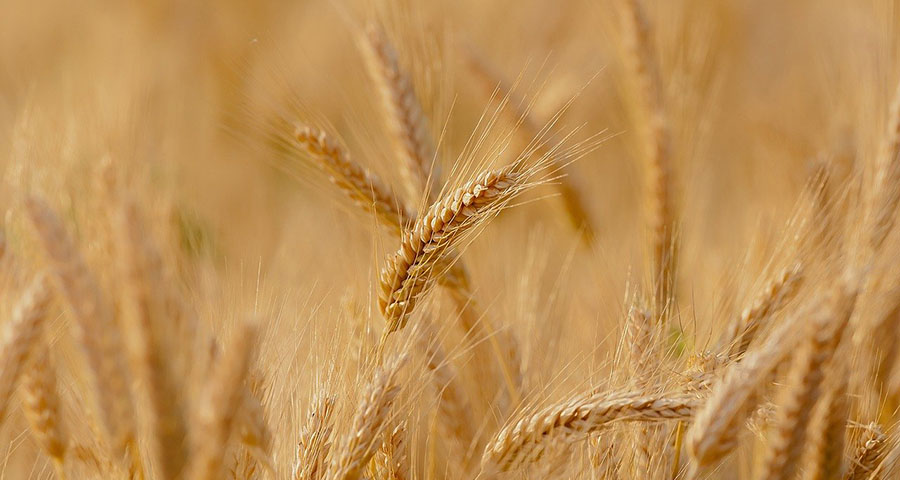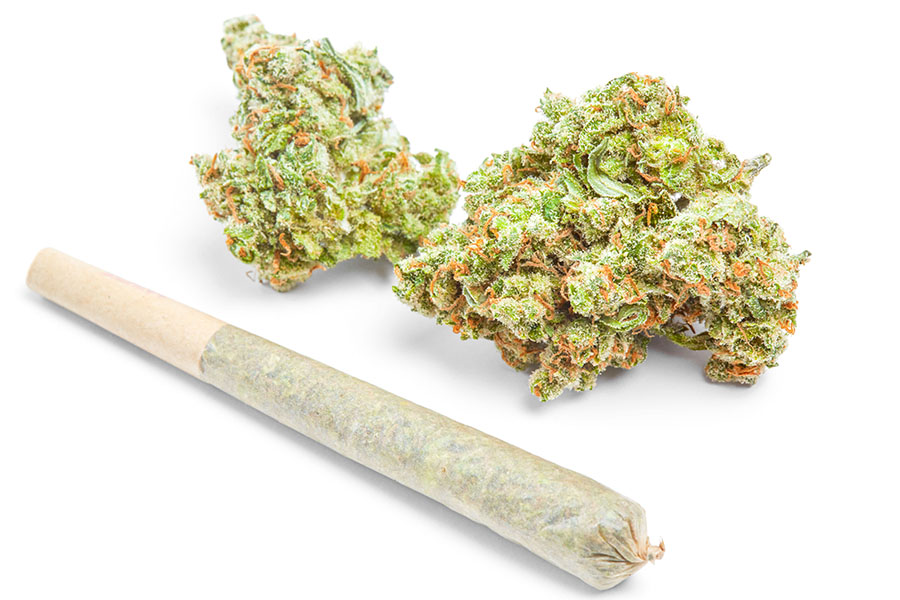TICKERS: CF, SOIL, GGGG, SIL, IPI, SMG, SQM; SQM-B; SQM-A, TNH, MOS
Bruno del Ama: Fertilizer Is a Growing Business
Interview
Source: Zig Lambo of The Energy Report (9/27/11)
 It may not sparkle or shine, but fertilizer has a bright future. In this exclusive interview with The Energy Report, Bruno del Ama, CEO of Global X Funds, tells us why investors should be looking at this "growing" industry and how his company's new global fertilizer and potash ETF (NYSE:SOIL) provides a great vehicle for profit. He also tells us why his company's gold and silver mining ETFs are poised to catch up with precious metal market performance.
It may not sparkle or shine, but fertilizer has a bright future. In this exclusive interview with The Energy Report, Bruno del Ama, CEO of Global X Funds, tells us why investors should be looking at this "growing" industry and how his company's new global fertilizer and potash ETF (NYSE:SOIL) provides a great vehicle for profit. He also tells us why his company's gold and silver mining ETFs are poised to catch up with precious metal market performance.
Bruno del Ama: Certainly. Exchange traded funds (ETFs) are fairly similar to traditional mutual funds. Their name indicates their main difference—they actually trade on an exchange like any other stock. ETFs have been one of the fastest-growing segments in the financial services industry. That's due to many of the benefits ETFs offer, such as low cost, transparency and tax efficiency.
TER: This really is a proliferating field. It seems like every time we turn around there's a new ETF. What factors does Global X Funds consider when developing an ETF for a particular sector?
BdA: We focus on three very important factors when we decide to bring new products to market. The first starts with the global macro trends. What are the big themes that are shaping the world? Our products have to fit into those very long-term secular trends that will continue to drive performance.
The second one is that it has to be unique and differentiated. So, if you look at the lineup of Global X Funds, there are essentially no products like them. And thirdly, the products in the ETF package must make sense and provide good access to the type of market that we're considering.
TER: How long has Global been managing ETFs?
BdA: We brought our first ETF to market in February 2009, and we have been ranked by BlackRock as one of the fastest-growing ETF companies in the world. We currently have about $1.5 billion (B) in assets under management and have been ranked by our peers both in Europe and the U.S. as the most innovative ETF company in North America.
TER: What are the advantages for investors buying an ETF versus other investment vehicles?
BdA: The main reason why ETFs have been very popular is their low cost. Their management fees are much lower than those of comparable mutual funds. ETFs also don't have the loads, distribution and short-term redemption charges that mutual funds typically incur. They're very cost efficient. Essentially, what ETFs do is bring institutional-like expense ratios to the retail investor. However, about half of the user base for ETFs is institutional so these products have to work well for both investor classes. The retail investor can essentially piggyback off the institutional investor and get access to the exact same expense loads. That has been a huge driver of growth.
Innovation, as you point out, has been another driver of growth. The fact that you can get access to areas of the world that were very difficult to access before is a huge benefit. For example, we have a whole suite of China sector funds. So, if you have a particular view on the China consumer segment, that's something that you can now place targeted bets on, which was very difficult, if not impossible before ETFs emerged.
The third benefit of ETFs is their tax efficiency. Additionally, market volatility has made the liquidity ETFs offer very appealing. If you have the market swinging up or down 300 basis points on any given day, you can come in at 11:00 a.m. and you then sell your shares at 3:00 p.m.
Transparency is yet another benefit of ETF investment. One of the problems in the market in 2008 was that a lot of investors in mutual funds didn't know exactly what they owned. In our case, as well as with most ETFs, you can go into our website and see all of the holdings updated daily for any particular ETF.
TER: Typically, how much trading occurs in these funds?
BdA: Essentially 90%–95% of ETFs are what's called passive funds. They track indexes developed and maintained by a third-party, such as Standard & Poor's, Dow Jones, FTSE, etcetera, and those indexes don't change very often. They're typically rebalanced two or four times a year. There's not a lot of trading that takes place. Of course, you could have corporate actions within a quarter where a couple of companies within the index merge or there's a spinoff. There's some amount of trading that happens inter-quarter between rebalance dates, but these funds provide exposure to a complete market in a passive way.
TER: So why did you start this particular potash and fertilizer ETF?
BdA: The only way to invest in the fertilizers/potash market is to buy individual stocks, most of which actually trade on foreign exchanges. This ETF allows investors to get diversified exposure to the whole fertilizers/potash sector, including stocks from 15 different markets, including Israel, Australia and China, to name a few. We had received inquiries from institutional investors looking for a simple and cost-effective vehicle to invest in the fertilizer/potash market. These investors are driven by the significant growth in the food and agro business market. Fertilizers are the nutrients that farmers require to increase crop yields, and as such, they are the first link in the global food supply chain.
TER: What are your growth expectations for this sector?
BdA: The prospects for continued growth in the fertilizer/potash business are very compelling. Purchasing power growth and the result of diet shifts in emerging markets are driving crop usage from grains toward high-protein feed, fruits and vegetables, which require about double the average application rate of fertilizers. The resulting growth in crop yields is enormous. For example, grain yields in India are less than one-half of those in the U.S., with lack of proper fertilization being the key reason.
TER: So the big markets are overseas. Is the North American market relatively saturated in terms of fertilizer usage?
BdA: Yes and no. I wouldn't call it saturation, because the U.S. is a big farming country and you continue to see growth in farming. But, certainly from a fertilizer use perspective, the U.S. is a much more efficient market and so the penetration of fertilizer is very high. Emerging markets such as India have low penetration of fertilizer, so there's a lot of catching-up that has to take place.
TER: Can you give us a little more of the specifics on your new Global X Fertilizers/Potash ETF?
BdA: Our Fertilizer/Potash ETF invests in the largest and most liquid companies involved in the fertilizer sector globally. It currently includes 29 companies from 15 different countries. What's unique about this sector is that it sits at the intersection of commodities and agro business—probably two of the most significant bull markets currently taking place.
TER: Are there any other similar funds out there at this point?
BdA: There is nothing else focused on these markets specifically. There is a fund that invests in the broader agro business market. They may have a quarter of their exposure to the fertilizers market but it's more diversified and includes farming operation and equipment. Ours is the only fund that has focused exposure on just the commodity/fertilizer aspect of the agro business market.
TER: You have a very geographically diverse group of stocks and most of them are companies that most investors have never heard of. Are there certain countries and regions that appear to be performing better at this point than others?
BdA: The emerging markets will clearly be the key engine of growth. Asia and Latin America already account for about two-thirds of global consumption of fertilizers to support food production for their large, growing populations. Global fertilizer consumption is growing fastest in these emerging markets with historical annual growth rates of more than 3% over the last 15 years. China and India specifically will be the key engines of growth. Annual consumption in China, for example, is expected to return to their pre-2008 growth levels of nearly 10% per year. Major growth has been taking place and will continue to take place in emerging markets.
TER: Are companies based outside of emerging markets included to provide geographical balance?
BdA: The fund represents the full fertilizer market, wherever those companies are located. China imports about 70% of the fertilizer they use. So, when you look at some of the names of companies in the U.S. or Israel, you know that some of their production is consumed at home but a big percentage of it is exported, primarily to emerging markets. There is a tremendous amount of trade and export taking place. Even by investing in some of the Australian or U.S. names, you will get access to the emerging markets. Obviously, when you invest in some of the fertilizer companies that are physically located in places like China, they're expected to generate outsized growth because their local market is growing the fastest.
TER: What are some stocks our readers might find interesting on an individual basis?
BdA: As a fund manager, we don't necessarily provide recommendations on single names. Most of these stocks are in foreign markets, but there are a handful of stocks that can be bought on U.S. exchanges, including CF Industries Holdings Inc. (CF:NYSE), Intrepid Potash, Inc. (IPI:NYSE), The Mosaic Company (MOS:NYSE), Scotts Miracle-Gro Co. (SMG:NYSE) and Terra Nitrogen Co., L.P. (TNH:NYSE). There's also one Chilean fertilizer company that can be bought as an ADR, Sociedad Química y Minera de Chile S.A. (SQM:NYSE; SQM-B:SSX; SQM-A).
As a whole, this is clearly a growth market, and valuations will reflect the growth dynamics that are taking place. We certainly believe that this is a great market to be in going forward.
TER: What are some of the other ETFs that Global X Funds manages?
BdA: Global X Funds operates, perhaps, the broadest suite of commodity producer ETFs across a number of markets, including gold, silver, copper, aluminum, lithium, uranium and oil. The best performing of our funds has been the Global X Pure Gold Miners ETF (GGGG:NYSE), which is a relatively new fund launched in March of this year. It tracks the Solactive Global Pure Gold Miners Index and provides exposure to companies that generate the vast majority of their revenues from gold mining. The other fund that has performed well is the Global X Silver Miners ETF (SIL:NYSE), which tracks the Solactive Global Silver Miners Index and is currently our largest fund with around $500M in assets under management.
TER: Do you have any other food for thought for our readers?
BdA: The one observation I would make is that when considering investing in the commodities space and precious metals miners in particular, you have seen relative underperformance for the miners relative to the physical metal. We are big believers in investing in the commodities markets through mining stocks and producers for a number of reasons. Reason number one is that these are operating companies, and even in an environment where commodity prices are flat, they're still generating revenues, earnings and growth. They're paying dividends so they're income-producing, as opposed to the metal itself, which doesn't pay any dividends. We see an opportunity in this relatively underperforming market for the miners. Gold and silver miners have done pretty well, but not as well as gold or silver itself. A lot of it is driven by the analysts not factoring in the current high gold and silver prices into the earnings forecasts of these companies because they do not expect them to remain at those levels.
If you think about that dynamic, three things can happen: If the price of gold remains at the level where it is, a fund that invests in physical gold wouldn't go anywhere because the price is not going up. But as the price stays at that level, the analysts are going to start factoring in those price levels into their earnings forecasts, so the price of the miners should go up while the prices of the physical gold stays flat. In an environment where the price of gold itself goes down, the physical gold ETF performance will be down. At that point, the miners have an advantage because they haven't factored in that higher gold price into the expectations so they should perform relatively better.
If the price of gold goes up, the physical gold ETF should go up. But that should also factor into the miners, who typically have had an exponential return relative to the price of gold because their costs remain relatively flat while their earnings go up. They have a leveraged return versus the physical metal, and this is a good time to look at the metal producers as opposed to the physical metal as an investment. Our clients are very well positioned to benefit from that exposure.
TER: We appreciate your time and insights today.
BdA: Thank you for having me.
Bruno del Ama is the cofounder and CEO of New York-based asset manager Global X Funds, which has $1.5 billion in assets under management. Previously, he served as head of operations in the structured products business at Radian Asset Assurance, and was a senior consultant at Oliver Wyman. He is a CFA charter holder and received his MBA from the Wharton Business School.
Want to read more exclusive Energy Report interviews like this? Sign up for our free e-newsletter, and you'll learn when new articles have been published. To see a list of recent interviews with industry analysts and commentators, visit our Exclusive Interviews page.
DISCLOSURE:
1) Zig Lambo of The Energy Report conducted this interview. He personally and/or his family own shares of the following companies mentioned in this interview: None.
2) The following companies mentioned in this article are sponsors of The Energy Report: None.
3) Bruno del Ama: I personally and/or my family own shares of the following companies mentioned in this interview: None. I personally and/or my family am paid by the following companies mentioned in this interview: None.


























































